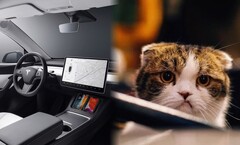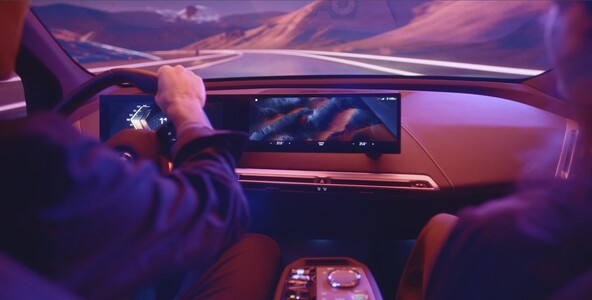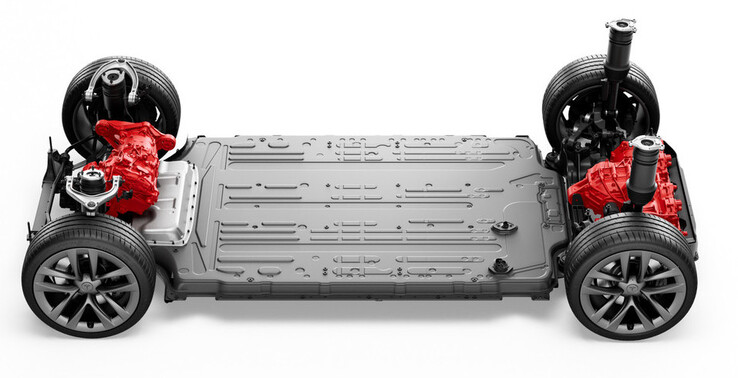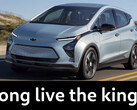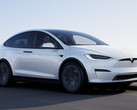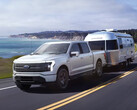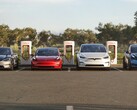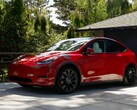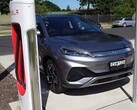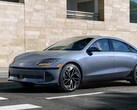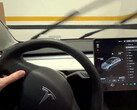1. Distracting and confusing user interface design
For some reason, physical buttons seem to have been outlawed in many of the depictions of futuristic tech in sci-fi media. Electric vehicle makers appear to have taken this idea and have run with it, with many EVs nowadays having hardly a button in sight. Instead, manufacturers are moving the vehicle and cabin controls to a central touch-screen infotainment screen.
Obviously the futuristic, minimalist aesthetic isn't the only reason buttons are going the way of the dodo. Doing away with buttons simplifies the cabin assembly process, reduces the bill of materials cost, and it cuts research and development costs, as explained by Road & Track. Theoretically, cost savings can be passed along to the consumer or, more realistically, added to the the profit margins, and there is arguably less to break if the cabin is simpler.
There are a few issues with replacing an array of buttons with a single touch-screen, though. For starters, a bright screen in the cabin can be a visibility issue for night-time driving. The other, arguably more important, issue with off-loading controls to the infotainment screen is cognitive load and distraction. One study by an automotive magazine in Sweden found that drivers took four times as long to complete a task on a touchscreen than they did to do the same task with physical buttons, meaning more distracted driving and an increased mental workload, which leads to poor decision making.
It should be fairly obvious why this is bad. Tesla vehicles are notorious for removing physical controls — going as far as to remove the stalk behind the steering wheel — and EV makers seem to embrace the trend more wholeheartedly, but it isn't isolated to one manufacturer or even electric vehicles.
2. Software performance upgrades are like real life microtransactions
More and more, the performance of the vehicles we drive is being determined by software. This is true for many regular vehicles, but EVs seem particularly susceptible to this sort of thing. The issue isn't necessarily a routine software update boosting performance a little — something that does happen, if only rarely — but more so the software upgrades manufacturers sell as a performance boost.
Mercedes-Benz, for example, offers a US$1,200 yearly subscription to enable its Acceleration Increase software upgrade for its EQS lineup, which increases the 0-60 mph (0-102 kph) acceleration by up to a second. Tesla also offers a software performance upgrade to the tune of US$5,000 directly from the Tesla app. To Tesla's credit, at least some upgrades may involve hardware installation, depending on the model of the car.
This sort of software upgrade is frustrating because the vehicle's hardware is clearly capable of delivering that performance, and the research and development has already been paid for. To play devil's advocate, it might be that the extra performance boost puts more strain on the vehicle's hardware, so manufacturers need to make sure the cost from any increased failure rates is covered by that extra charge. Still, it stings to have to hand over thousands of extra dollars for something your car is already physically capable of in most cases.
3. Misleading EPA range numbers can falter by up to 36%
The range debate has always been an important part of the electrification conversation, and manufacturers are eager to brag about their EV range numbers whenever they can. Unfortunately, EV range estimates are about as indicative of actual performance as looking at the colour of a cup of water to try and determine its temperature.
A perfect example of how much EV range can vary from the manufacturer quoted numbers is the results of InsideEVs's real-world range tests. On the one hand, you have Tesla vehicles achieving around 12% less range than their EPA estimates, and on the other hand, you have brands like Porsche scoring as much as 36% more than the quoted EPA range. This may not seem like much, but 12% is the difference between a Tesla Model 3 Long Range's 358 miles and a Kia EV6's 310 miles.
Add to this the extreme variation in EV range when the temperature drops, and you're bound to end up with potential buyers shying away from electric vehicles entirely because they heard from a friend that their Tesla's range didn't live up to their expectations.




